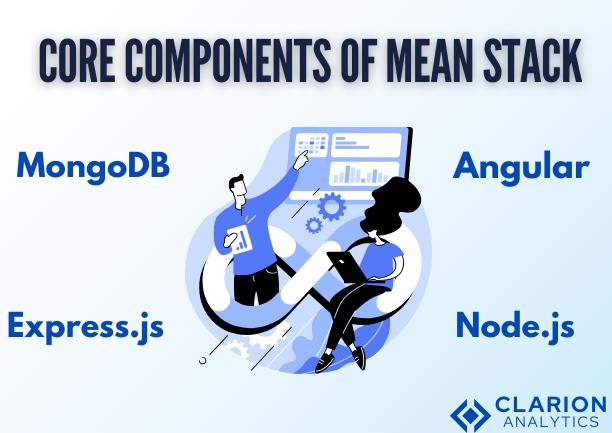
Introduction
MongoDB alongside Express.js together with Angular and Node.js forms the fundamental elements of the MEAN stack which serves as a popular development framework for full-stack development. Customers find appeal with the MEAN stack thanks to its JavaScript core structure and elastic capabilities. MEAN-based application deployment needs better dependency control and elimination of environmental irregularities between systems.
The culture which DevOps develops between developers and operations personnel helps resolve the current industry challenges. Continuous Integration (CI) combined with Continuous Deployment (CD) allows the software development lifecycle to speed up through these processes that speed up development time and boost reliability and reduce potential risks. CI/CD pipelines enable automation which lets teams conduct code integration and testing and deployment in a smooth efficient approach.
The implementation of automation tools lowers possible human mistakes in addition to creating procedural uniformity between different platforms. The version control system Git helps developers monitor code updates through version control features that support team collaboration while granting users the ability to perform update rollbacks as necessary. The containerization tools Docker and Kubernetes develop application-friendly scalable environments with isolated platforms for smooth deployments over different platform infrastructures.
The research investigates ways in which DevOps principles work to improve MEAN stack processes starting from creating CI/CD pipelines to determining deployment approaches and overseeing system operations with security considerations.
MEAN Stack in the DevOps Landscape
Core Components
MongoDB operates as a flexible NoSQL database system that enables scalable mechanisms.
Express.js functions as an easy-to-handle framework that operates backend applications.
Project teams can use Angular to create sophisticated interfaces that function dynamically.
Node.js functions as a runtime environment which brings JavaScript capabilities to server-based needs.
Deployment Challenges
Dependency Conflicts: Ensuring consistent package installations.
Environment Configuration: Maintaining uniform setups across development and production.
Scalability Constraints: Managing performance under varying loads.
DevOps Advantages in MEAN Stack Deployment
Process Automation enables the system to handle all build and deployment operations without human interaction.
The version control capabilities of Git along with other tools make collaboration simple while enabling team members to perform rolling back when needed.
Standardized environments become possible through the use of Docker and Kubernetes technologies.
Implementing a CI/CD Pipeline
Understanding CI/CD
CI processes merge and test code in a shared repository system to detect problems in the early stages.
The Continuous Deployment (CD) system manages automatic releases that expedite the deployment of new features.
Recommended CI/CD Tools
Organizations use GitHub Actions Jenkins and GitLab CI/CD as tools to achieve automated builds together with deployment functions.
HTML code testing relies on Jest as the Node.js framework and Karma operates as the Angular testing suite.
Sample CI/CD Workflow
Commit Code to GitHub/GitLab.
The combination of Jest and Karma performs automated testing.
Application Build using Docker.
Subject the application to staging before reviewers have a chance to examine it.
The system produces automated production deployments that start after testing passes successfully.
Effective Deployment Approaches for MEAN Stack
Deployment Platforms
Self-Hosted: Requires infrastructure management.
Users can deploy scalable host solutions through Cloud Services which include AWS, Azure, and GCP.
Platform-as-a-Service including Heroku and Firebase simplifies the deployment operation.
Leveraging Containers and Orchestration
Docker: Packages MEAN applications for uniform deployment.
Kubernetes manages large-scale operations of containerized applications.
Managing Node.js in Production
PM2: Ensures efficient process management.
The Nginx application enables reverse proxy operations to enhance performance levels.
Terraform/Ansible: Automates infrastructure provisioning.
Monitoring and Security in MEAN Stack DevOps
Monitoring and Performance Tools
ELK Stack consists of Elasticsearch Logstash and Kibana which enables complete logging analysis.
Two monitoring tools, Prometheus in combination with Grafana enable users to track application fitness and system performance indicators.
Security Enhancements
Endpoint protection requires implementation of authentication features including JWT and OAuth.
Secret Management: Use environment variables or vaults for sensitive data.
HTTPS Enforcement: Strengthen security through SSL/TLS encryption.
Security Assessment Tools
SonarQube functions as a platform that maintains code quality standards and detects potential weaknesses in the system.
OWASP ZAP serves as a security tool to find application-related risks during testing operations.
Conclusion
By integrating DevOps strategies with MEAN stack applications, teams can achieve accelerated, stable, and secure deployments. CI/CD pipelines automate testing and release cycles, containerization guarantees consistency, and monitoring tools enhance performance oversight. Implementing these DevOps methodologies results in optimized efficiency, minimal downtime, and streamlined MEAN stack deployment pipelines.
Are you intrigued by the possibilities of AI? Let’s chat! We’d love to answer your questions and show you how AI can transform your industry. Contact Us
